Commercial Fryer Repair Guide: Troubleshooting Tips & Maintenance

Your commercial fryer is a mainstay of your kitchen. If your fryer goes down, many aspects of your kitchen also grind to a halt. The key to avoiding fryer failure is to perform regular maintenance and be aware of the signs that something is amiss.
By staying on top of your commercial fryer’s performance, you’ll be able to troubleshoot issues and ensure you can always get those hot fries, mozzarella sticks, and buffalo wings to your customers without delay!
For Frying Out Loud! Recognizing the Signs of Fryer Failure
Since your fryer is an essential piece of kitchen equipment, you should always aim to keep it in the best condition possible. Not only does the food taste better, but the fryer will perform more efficiently with less waste and risk of ruined food. With the right care, you’ll get reliable service for years.
Familiarize yourself with the signs of fryer failure so you know the moment something goes wrong. A fryer does a big, intense job, and when you combine hot oil with mechanical components, there are several things to be aware of.
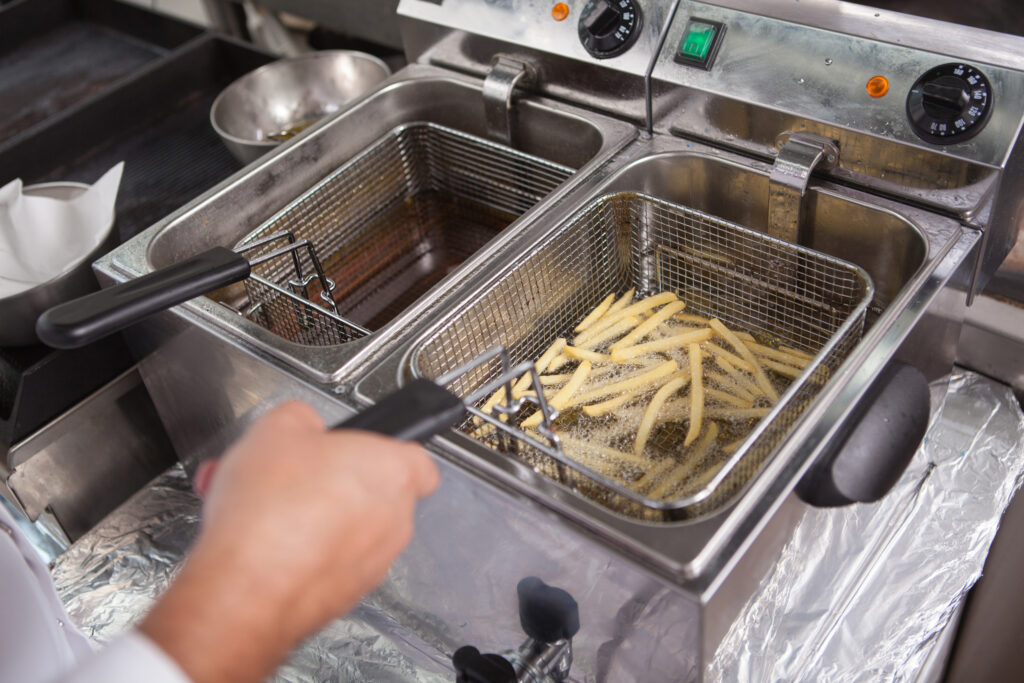
1. Unusual Noises or Vibrations
Obey the “stop, look, and listen” rule when it comes to your commercial fryer. If you notice strange noises or vibrations, it often means internal issues are at hand. It could be loose components or signs of wear and tear. Do your best to find the source of the strange noise right away.
2. Failure to Correctly Heat
Proper heating is everything when it comes to deep frying. If the oil doesn’t reach the right temperature, you can end up with undercooked, unpalatable (and dangerous) food. If your fryer isn’t getting that hot hot heat, it could be due to several issues, such as a faulty thermostat, a malfunctioning heating element, or issues with the gas or electric supply. Temp your food and regularly check the settings to stay aware of the first sign of a problem.
3. Overheating and Safety Shutoffs
Overheating is another critical issue. When a fryer overheats, the safety mechanisms kick in and the fryer shuts off—not great for food service or safety. Overheating can be caused by a number of factors, including blocked ventilation, thermostat malfunctions, and issues with the control system. Start to troubleshoot at the first sign of overheating.
4. Inconsistent Food Quality
The goal is to always notice issues BEFORE your customers do. If you notice or get complaints of inconsistent food quality, it’s a major indicator that something is wrong with your fryer. Fried items might be unevenly cooked, greasy, or taste “off.” Any of these issues could indicate a problem like uneven heating, oil filtration issues, or oil contamination.
5. When to Troubleshoot and When to Call for Professional Service
When you notice an issue with your fryer, do you roll up your sleeves and DIY, or is it time to call a professional? There are a number of factors at play in the decision. Some fryer issues are resolved with a simple fix.
Check for loose connections, problems with the oil levels, or dirty oil buildup. Sometimes, cleaning the fryer thoroughly will resolve your issues. If a good cleaning doesn’t do the trick, it’s likely time to call in professionals. They will examine your fryer and get it back to working condition.
Don’t sleep on fryer issues! When you’re dealing with proper food temperatures and hot machinery, it’s important to check out concerns right away. Hot oil requires safe handling, and fryer issues often call for a professional.
No Small Fries Here: The Essentials of Preventative Maintenance
As with many issues in life, prevention is crucial. When it comes to your commercial fryer, preventative maintenance goes a long way toward keeping things running efficiently and safely.
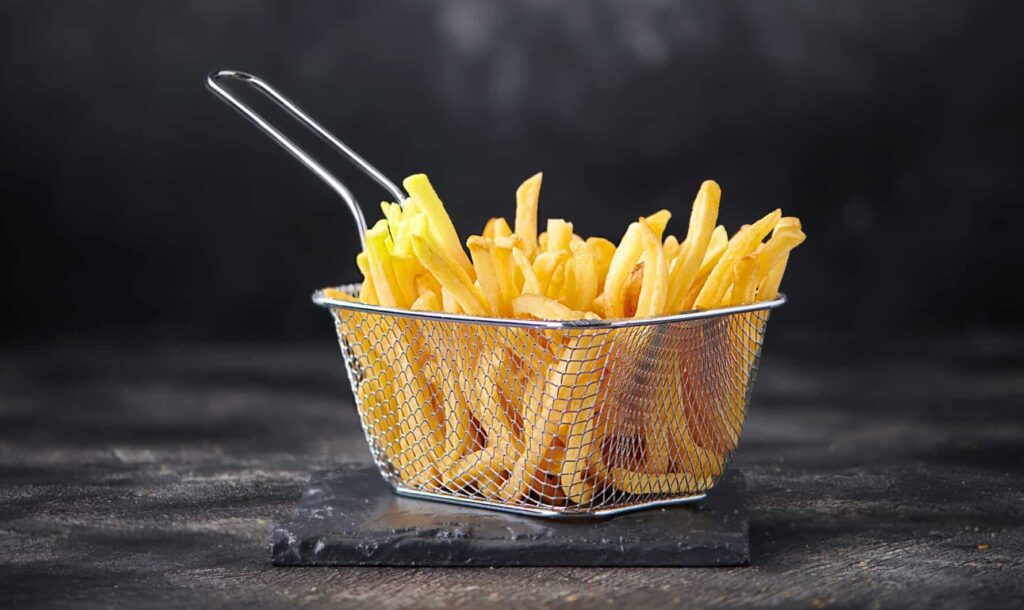
Set and follow a structured maintenance schedule. You’ll ensure it happens by making it a regular feature on your to-do list. Preventative maintenance will prolong the life of your equipment, improve the safety of your team, and ensure that you’re serving high-quality, delicious food. Here’s the daily, weekly, and monthly task breakdown for fryer maintenance.
Daily Commercial Fryer Maintenance Checklist
Each day you use your fryer, you should perform a few checks.
- Clean the Fryer Basket and Vat: At the end of service, remove the fryer basket and vat and give them a thorough cleaning. This will help avoid the buildup of food bits and grease that can make food taste off.
- Filter the Oil: Oil filtration is crucial for the taste and safety of your food. Filtering gets rid of food debris and keeps the oil usable for longer. You’ll get better-tasting food and avoid the risk of burning.
- Check Oil Levels: The oil levels in your fryer help it to avoid over and underheating. The temperature is based on having the proper levels in your equipment, so be sure to check it regularly throughout use.
- Clean Exterior Surfaces: At the end of shift, wipe down the exterior of the fryer to clean up spills. Larger grease and oil splatters present a safety hazard (fire, slips, burns) and should be addressed immediately.
Weekly Fryer Maintenance Checklist
Each week, you should do a spot check and deep cleaning of your fryer. Here are the tasks to put on your weekly maintenance list.
- Deep Clean the Fryer: At least once a week, you should drain your fryer oil completely and clean the interior with a manufacturer’s recommended fryer cleaning solution and a stiff brush (if recommended). Carbonized oil and residue can impact the performance of your fryer as well as food taste.
- Inspect the Heating Elements: Do a visual check of the heating elements to watch for any signs of wear, tear, and damage. The elements should be clear of any debris or oil splatters.
- Examine the Thermostat and Controls: After checking the heating elements, do a quick test of the thermostat and control settings. Use a thermometer to confirm temperature accuracy and responsiveness.
Monthly Fryer Maintenance Checklist
Some tasks are best performed monthly. When they become part of your regular routine, they will help to keep your commercial fryer in top condition.
- Calibrate the Thermostat: As you check temperatures on your other equipment, it’s also a good time to calibrate the thermometer on your fryer. When it comes to deep frying, accurate temperatures are crucial.
- Check for Gas or Electrical Issues: Look at the gas flow and electrical connections for any signs of damage, fraying, or leaks. All connections should be secure and tight.
- Inspect Ventilation and Airflow: Is your fryer’s ventilation system clear of any debris or obstructions? Ventilation is one of the most critical needs for proper fryer performance. Adequate airflow helps prevent overheating so the fryer works as efficiently as possible.
Additional Fryer Maintenance Tips
There are a few guidelines that can help you ensure your fryer is performing at optimal condition. Follow these fryer maintenance tips to get the most from your fryer.
- Always Use High-Quality Oil: The higher-quality oil you use, the better tasting your food will be. For deep frying, it’s best to choose oil with a high smoke point and fewer impurities.
- Monitor Cooking Times and Temperatures: Higher temperatures don’t yield faster, better results. Always avoid overheating the oil by keeping a close eye on cooking times and temperature settings to ensure food is hitting the correct temperature for safety.
- Check Gaskets and Seals: Regularly take a look at the gaskets and seals on your commercial fryer to ensure that they don’t show cracks or leaks (signs that they need replacement). Make sure everything is in good working order.
- Check the Basket Condition: Make sure your fryer basket is in good repair too. Warping and broken wires can lead to uneven cooking, dropped food, and even safety issues.
- Inspect Oil Filters: The oil filtration system in your fryer is crucial to keeping oil clean, safe, and palatable. Be sure to follow the manufacturer’s instructions on maintaining and changing the oil filter to keep your oil clean and fresh.
Preventative maintenance will help you avoid downtime and bigger problems down the road. A commercial fryer isn’t a high-maintenance piece of commercial kitchen equipment, but it does see some of the harshest working conditions. It’s important that you take steps to keep it in excellent condition to avoid breakdowns and food mishaps.
Breathe Fryly: The Benefits of Regular Cleaning and Care
Regular cleaning and routine maintenance of your commercial fryer pays off. It’s well worth the effort. Kitchen cleanliness is crucial, and the benefits go way beyond aesthetics. By taking time to clean and maintain your commercial fryer, you’ll protect your investment in one of your most critical kitchen tools.
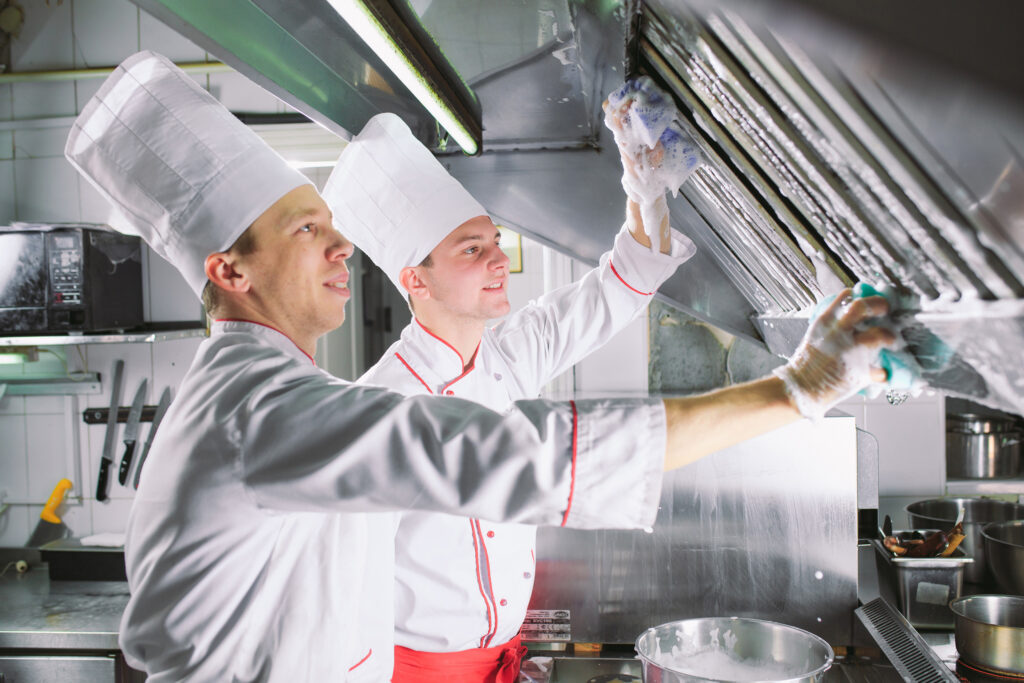
The main benefit of keeping a commercial fryer clean is that grease and food particles can cause major wear and tear on your fryer’s components. When you keep it clean, you reduce the stress on the various pieces of the fryer and extend its lifespan. Cleaning helps avoid corrosion damage from oil and food residue.
Another big reason to keep your fryer clean is that it enhances the quality of your food. A clean fryer leads to higher quality and better-tasting delicacies. All it takes is one bad experience to turn customers away. Fishy-tasting oil, soggy foods, and burnt bits can mean game over for customers.
By performing regular cleaning and maintenance, you’ll also save money. You’ll detect concerns early on, when a simple adjustment or fix can prevent more expensive and extensive repairs down the road (or a total fryer replacement).
You’ll also enjoy lower operating costs on your fryer. A clean fryer works efficiently, consumes less energy, and requires less frequent part replacement and repair.
Keep your oil filtered and clean too. Replace the oil regularly (follow the manufacturer’s guidelines) to ensure that food tastes fresh, crispy, and delicious. Clean oil will also help your equipment run as efficiently as possible.
Make cleaning your fryer part of your daily routine. It takes just a few minutes each day to wipe down the exterior surfaces and clean the basket and the vat to keep everything in the best working order.
Fight Fryer with Fryer: How to Troubleshoot Common Fryer Problems
When your fryer starts acting up, it’s important to get to the bottom of the issue quickly. The first step is often to determine if you can address the issue yourself or if you need to call a professional.
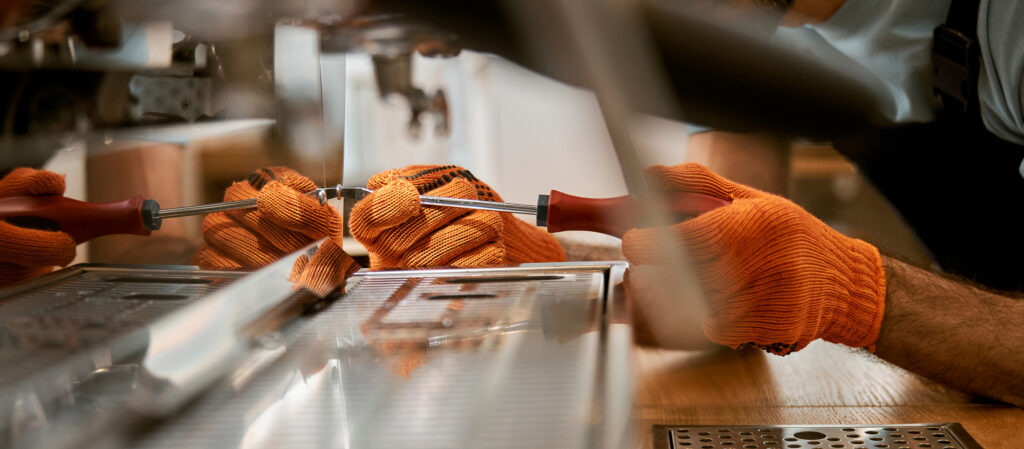
So, how do you identify easy fixes versus more complex issues? You know your knowledge and comfort levels with fixing your kitchen equipment. If you’re comfortable with minor fixes, they may include resetting a circuit breaker, tightening loose connections, and replacing worn components like the fryer basket.
More complex issues will likely require professional support. These issues might involve serious problems that affect the core components of the fryer. Malfunctioning heating elements, thermostats, or a gas supply means it’s time for the expertise of a pro to guide you toward the right replacement parts. Skilled technicians have years of experience to help you get your fryer up and running in a timely manner.
Step-by-Step Troubleshooting Guide for Commercial Fryer Repair
Here’s how to separate the small fixes from the bigger problems with your fryer. These are some of the most common issues with fryers and the best way to address them:
Issue: Your fryer goes dead or won’t turn on.
Fix: The first fix sounds obvious (but happens frequently): make sure the fryer is plugged in and check your circuit breaker. Reset the circuit if the power isn’t arriving at the outlet.
Issue: The fryer isn’t reaching a set temperature, and food is coming out undercooked.
Fix: Step one is to verify that your thermostat is set correctly to where you think it’s supposed to be (things can get bumped in the kitchen). You may need to check the user manual for your fryer to get instructions on resetting and recalibrating the thermostat if it appears to be off. Oil temperature is crucial for quality food items.
Issue: Food isn’t cooking evenly, and your fryer seems to have hotspots or cooler areas.
Fix: If food comes out unevenly cooked, the first thing to check is the oil level. Is it within the recommended range? Replace the oil, especially if it’s older, cloudy, or has debris, to make sure you are set for better consistency.
Issue: The fryer is making unusual noises or seems slow to heat.
Fix: Power down the fryer and let it cool completely before troubleshooting. Remove and clean the burners/heating elements and make sure there is no grease buildup to interfere with the heating process.
Issue: The fryer often overheats, or the safety kicks in and shuts the fryer off.
Fix: Overheating often indicates an issue with ventilation and airflow. Make sure you’re your fryer’s ventilation system is clear of any obstructions and has the recommended clearance from all other equipment. Check the air system for blockages, and clean the ventilation system as necessary.
Issue: The fryer continues malfunctioning despite performing the checks above.
Fix: Look at the connections and electrical wiring for signs of leaks, fraying, and damage. At this point, it’s usually best to call a professional technician who can help with the larger issues of commercial appliance repair.
A Fry for Help: To DIY or Not to DIY?
DIY fixes are pretty standard in the commercial kitchen, but there are some reasons why you should leave more complex issues to the professionals. When it comes to a fryer, you’re working with components like gas lines, electrical wiring, and high-temperature equipment—don’t (literally) get burned by going for a quick fix.
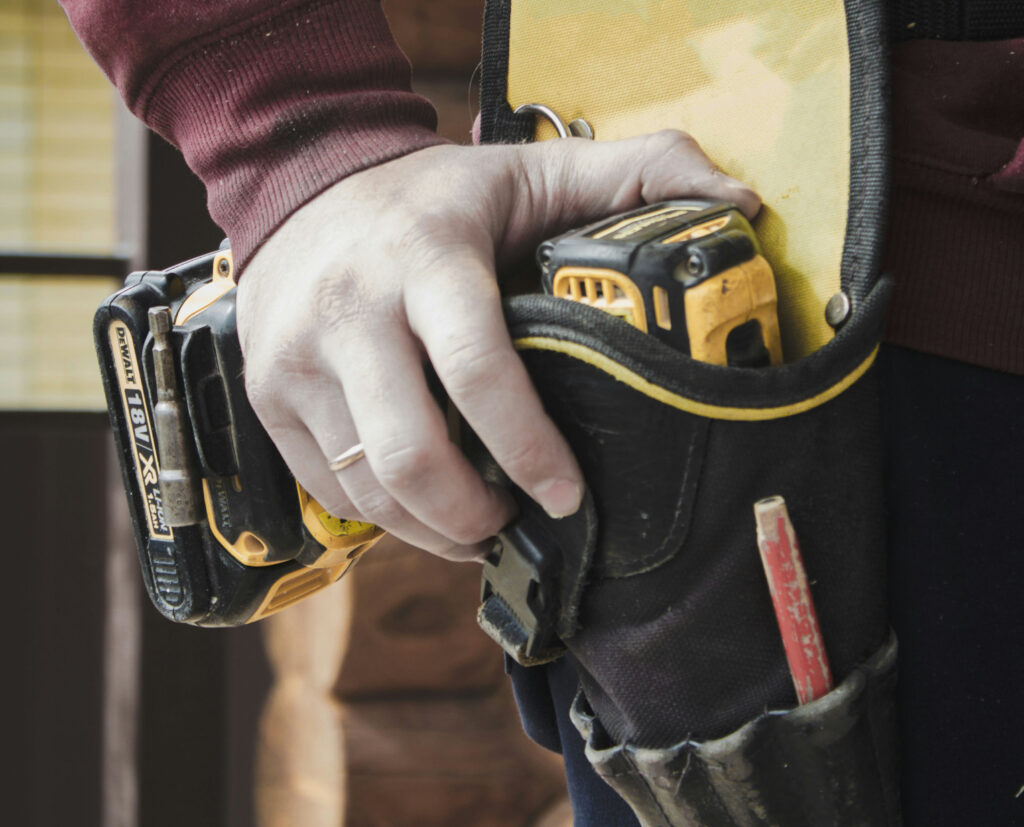
Aside from the scary hazards like gas leaks, severe burns, and electrical fires, you also risk voiding your warranty. Unauthorized and undocumented repairs can void out the warranty, leaving you on the hook for future repair costs.
So even when DIY seems like a way to save, always proceed with caution and put safety first. If you are unsure about any fixes for your fryer, it’s best to get support.
Live to Fry Another Day: Prioritizing Safety in Fryer Maintenance
We might sound redundant, but safety cannot be overstated. When you’re dealing with hot, dangerous kitchen appliances, safety is the number one priority and should be taken seriously by everyone in the kitchen.
As a business owner, kitchen manager, or head chef, putting safety first reduces your liability in case of an accident. It’s important to comply with all food service and equipment regulations and always prioritize safety in the kitchen. Here are a few of the critical safety measures.
- Inspect Safety Shutoffs and Thermostats: Test your fryer’s safety shutoffs to ensure they’re functioning as expected. Make sure the thermostats are also functioning correctly. It’s critical that these components work to protect your fryer from overheating and becoming a fire hazard.
- Check Gas Lines & Connections: If you’re cookin’ with gas, be sure to regularly inspect the gas line and connectors of your gas fryers for damage, leaks, or other issues. Use a gas leak detector, and if something is found, turn off the supply immediately while you call a pro for emergency service.
- Follow Electrical Safety Guidelines: If you’re using electric fryers, make sure that the cords and connections are securely working and don’t show signs of fraying or damage. Look at your power cords regularly to make sure they’re in good repair.
- Ensure Proper Ventilation: Ventilation is another mainstay of kitchen safety. Make sure all ventilation is clean and unobstructed. All equipment should have plenty of clearance (as directed by the manufacturer).
- Install Fire Extinguishers: If you have any hot equipment in your commercial kitchen (and you very likely do), you must have the designated number of fire extinguishers. Keep them within easy reach of the fire. Regularly check the extinguishers to ensure a full charge and proper maintenance.
- Train Your Staff: Knowledge is power, and if your staff is using the fryer, they need to be armed with the right training and protocols. Make sure your staff knows how to handle hot oil and what to do in case of spills and burns.
- Adhere to Manufacturer Guidelines: As with many pieces of kitchen equipment, manufacturer’s guidelines are indispensable. Follow the maintenance and safety protocols to make sure you don’t void your warranty or miss an important instruction.
- Review Local Health & Safety Regulations: Be sure that you’re staying up on the latest local health and safety standards and regulations for commercial kitchen equipment. Any cooking done with your fryer should follow best practices and meet (or better yet, exceed) those standards.
- Schedule Inspections: Routine inspections help you ensure you’re on track. Schedule a visit from a service professional to check your cooking equipment, including your fryer. A professional should make sure that your equipment complies with safety standards and should offer you documentation to keep for your records.
- Keep a Log: Our memories are often not as precise as we hope. A detailed record log of your maintenance and safety checks will help you monitor the performance of your fryer and give you a full picture of your equipment’s health.
Fryer’s Remorse? How Warranty and Service Contracts Affect Fryer Repairs
Your warranty terms and service contracts are essential guidelines for your approach to fryer repair and maintenance. If you’re hoping to manage your expenses and protect your kitchen equipment investment, pop a caffeinated beverage and spend some time diving into the details.

There are a few points you should look at in your warranty:
- Scope of coverage
- Duration of coverage
- Service inclusions and requirements
- Exclusions and limitations
- Service response time
- Authorized service providers
You can leverage your contracts to help you offset the costs of repairs. Many warranties may include maintenance services and inspections. The warranty may also cover some repair costs, which can help limit your out-of-pocket expenses.
One of the most important factors is installation. If you’ve purchased a new fryer at Eleven36, our team can handle the installation (and even remove old, damaged equipment). We’ll make sure that your fryer is installed properly, so you don’t have to worry about getting it right.
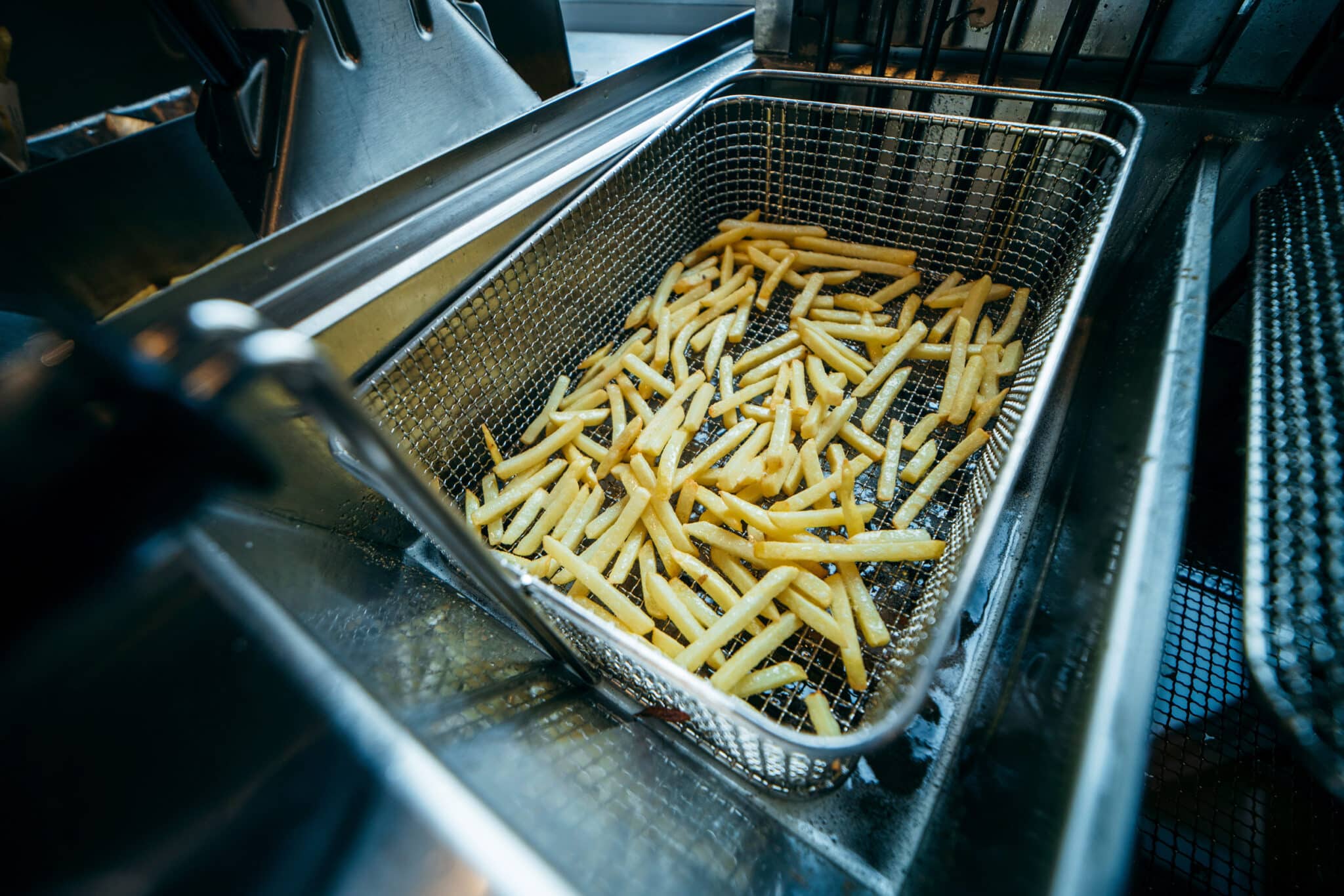
Your Fried and Joy: Set Up a New Fryer for Success with Eleven36
If you’re ready to invest in a new fryer, Eleven36 will help you find the best options in the industry. Quality is everything in kitchen equipment, and you want to purchase deep fryer brands that are time-tested and trustworthy.
Once you’ve decided on a fryer, timely maintenance and repair are crucial for keeping it working well for years to come. A small amount of regular preventative maintenance and a proactive approach to early signs of failure go a long way in keeping your team safe and your fryer in good repair.
Create a schedule, and regularly check the most important points on your fryer. Clean the fryer regularly to avoid the buildup of food particles, oil, and debris that can throw a wrench into performance (at the most inconvenient times).
If you need assistance selecting a new fryer or any restaurant equipment, our team of experts at Eleven36 is here to help. We’re happy to help you explore commercial fryers to find the best fit for your kitchen and cooking needs. Reach out today to learn more!
